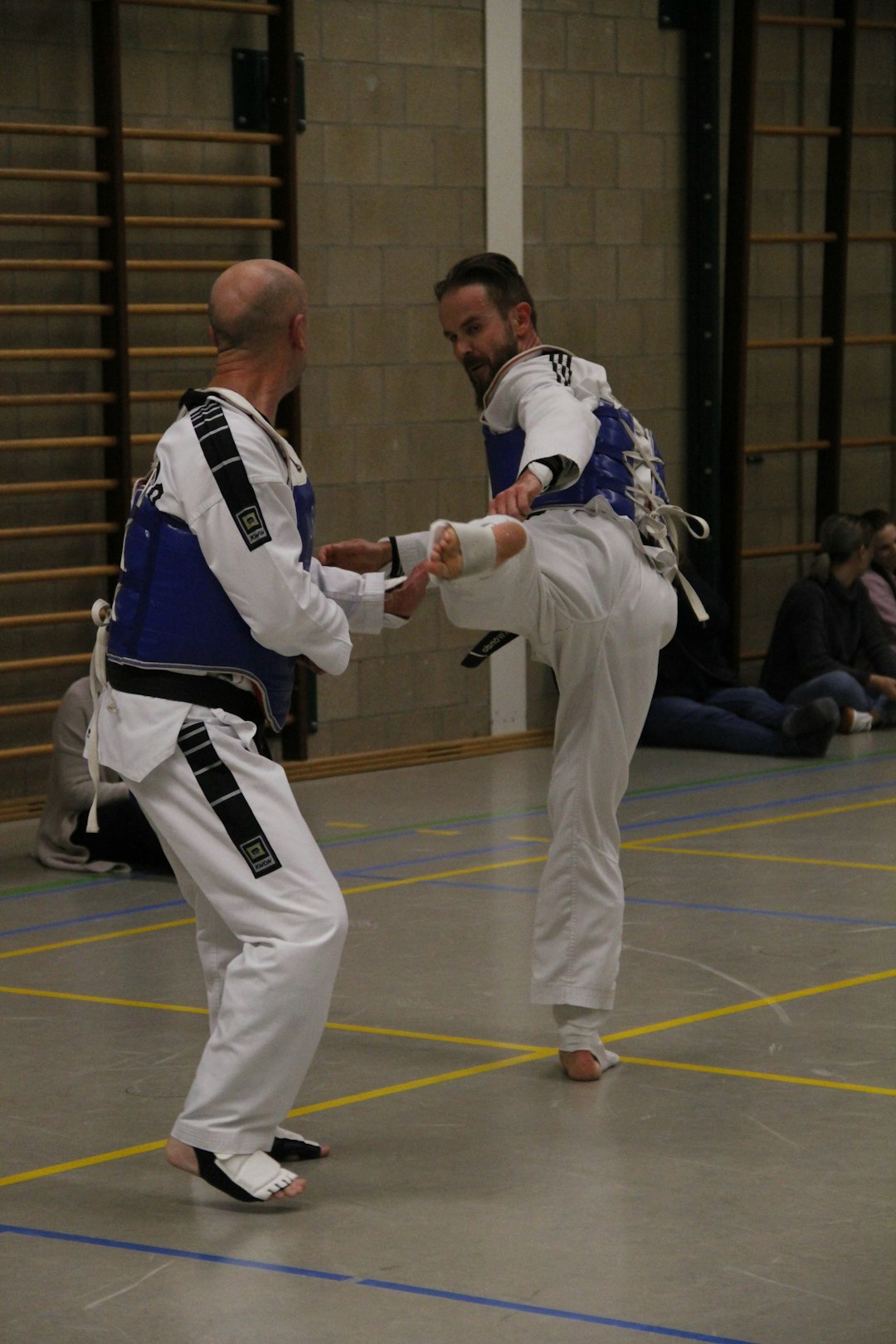The article emphasizes the importance of a properly fitting karate gi for sparring, highlighting that it must allow full range of motion and comply with competition standards. The traditional training garment, which includes a jacket, trousers, belt, and sometimes a headband, is made from durable fabric to endure rigorous practice while enabling mobility for kicks, punches, and blocks. For accurate measurement, practitioners should take their personal dimensions over a light undergarment, focusing on chest, waist, hips, arm length, and pant inseam. These measurements ensure adherence to the karate sparring gi's specific requirements, which differ from those used for daily training or formal events. It is crucial to select a gi based on one's personal measurements and the style of karate they practice, whether it demands a traditional or modern fit. A well-fitted gi is not only comfortable but also essential for safety and optimal performance in sparring matches, as it affects the athlete's ability to execute techniques effectively. Practitioners should refer to sizing charts from manufacturers and adhere to their dojo's guidelines or the specific sparring rules regarding fabric weight and design elements to ensure they have the right uniform for competition.
When stepping onto the mat for a karate practice or competition, the attire one wears is not merely a uniform but a symbol of respect and discipline within the martial arts community. Often referred to colloquially as a “karate uniform,” its formal name is a ‘gi.’ This article delves into the essence of the gi, offering insights into its significance in the martial arts practice. It also provides essential measurements for those seeking to measure their karate sparring uniform for optimal performance and comfort. Whether you’re a novice or an experienced practitioner, understanding how to properly size your gi is key. Join us as we explore the nuances of sizing a karate sparring uniform, ensuring you are prepared for every move.
- Understanding Karate Uniforms: The Significance of the Gi
- Key Considerations for Measuring Your Karate Gi
- Step-by-Step Guide to Properly Sizing a Karate Sparring Uniform
Understanding Karate Uniforms: The Significance of the Gi

When engaging in karate, practitioners adorn themselves in a garment known as a gi. The gi is more than just a uniform; it represents respect for the discipline and its traditions. Crafted from sturdy cotton or hemp fabric, the gi facilitates the practitioner’s mobility while providing durability to withstand the rigors of training. It is composed of a jacket, trousers, belt (obi), and sometimes a headband (kendama). Each component of the gi serves a specific purpose: the jacket and trousers allow for unrestricted movement during techniques like kicks, punches, and blocks, while the belt holds the garment closed securely. The headband helps keep hair out of the face, ensuring visibility and safety during practice or competition.
In terms of sizing, it’s crucial to measure correctly for a karate gi to ensure optimal performance and comfort. For instance, a karate sparring gi may require different measurements than one intended for daily training or formal events. The jacket should reach just below the hip, with sleeves ending halfway down the forearm. Trousers should be hemmed at the ankle, allowing for easy movement during stances and kicks. The belt must be long enough to tie properly without being oversized. When selecting a gi, one should consider not only their own measurements but also the specific requirements of the karate style they practice, as some may prefer a more traditional or modern cut. Is your measurement accurate for sparring? Yes, for karate sparring, it’s essential to have a gi that allows for maximum mobility and adheres to the competition standards set by your particular karate organization.
Key Considerations for Measuring Your Karate Gi

When preparing for a karate sparring match, it’s crucial to ensure that your karate gi, or uniform, fits correctly. A properly fitted gi is not only a matter of comfort but also impacts your performance and safety during the match. To measure your karate gi accurately, start by considering the weave and material of the gi, as these can affect how the fabric drapes and moves with your body. Is the weave of the gi tight or loose? How does the material stretch or breathe? These factors will influence the measurements you take.
Measurements should be taken while wearing a lightweight undergarment to replicate the layer you’ll have on under the gi during sparring. Begin by measuring your chest, waist, and hips, keeping in mind that traditional karate gis are typically sized by chest measurement. How wide is your torso? What is the circumference of your chest at the fullest part? Use a flexible tape measure to obtain these figures, ensuring it’s wrapped snugly but not too tightly against your undergarment. For the sleeves and pants, consider your reach and leg length; these should be measured from the center back neck to the wrist and from the crotch seam to the floor, respectively, to allow for movement and a full range of motion during practice or competition. Remember, the goal is to measure for a gi that allows you to move freely without being overly baggy or restrictively tight.
Step-by-Step Guide to Properly Sizing a Karate Sparring Uniform

When selecting a karate sparring uniform, it’s crucial to ensure that the garment fits properly for both comfort and safety during practice or competition. A well-fitted karate gi for sparring is not only more comfortable but also allows for greater mobility and protection. To begin with, consider the specific requirements of your dojo or the sparring rules you will be adhering to, as these may dictate certain fabric weights or design elements.
Before purchasing a karate sparring uniform, measure yourself accurately. What is the correct way to measure for a karate sparring uniform? The answer lies in measuring your chest, waist, and hips, as well as your height. Ensure that you wear fitted clothing when taking these measurements for the most accurate fit. After obtaining these measurements, compare them with the sizing charts provided by the manufacturer or retailer. How much room should there be in a sparring uniform? Typically, there should be enough space to move freely without the garment being overly baggy or restrictive. The jacket should reach the belt level at the waist when your arms are hanging naturally at your sides. Additionally, the pants should fit comfortably around the waist and hips without being too tight or too loose. Remember, in karate sparring, agility is key, and a properly sized uniform contributes to your performance.
In wrapping up our exploration of karate attire, it’s clear that a karate uniform, commonly referred to as a gi, is more than mere garb—it’s a symbol of tradition and respect within the martial arts community. Whether you’re measuring for a standard practice gi or a specialized sparring model, understanding the nuances of sizing ensures both functionality and adherence to the discipline’s ethos. With the insights provided on how to accurately measure for a karate sparring uniform, practitioners can confidently select gear that meets their needs, enhancing their performance while honoring the rich history of this venerable practice.
